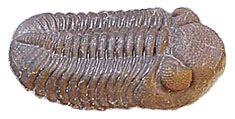Adventures on Earth for the July 20, 2011, edition of The Review\
By George E. Beetham Jr.
Tropical storm season 2011 got off to a slow start as it normally does. Bret, just the second Atlantic tropical storm of the year, was making its way across the Bahamas on Monday, heading on a track that would take it out to sea.
While Bret appeared to be no threat to the mainland, the season is proceeding apace and will pick up as we move into August.
By mid-August we will move into the heaviest part of tropical season.
Going forward, Atlantic storms will form in the Eastern Atlantic near the Cape Verde Islands off the west coast of Africa – the area known as the inter-tropical convergence zone.
As storms and disturbances move off the African coast they move out over warmer water, drawing heat and moisture from the ocean. The heat and moisture rise as convection currents, building huge clouds.
Unless something happens to disturb these storms, the convection builds into the counter-clockwise spin of tropical storms.
Pressure drops and the storm builds in wind speed as the pressure drops.
Cape Verde storms generally move westward across the Atlantic and over the Windward and Leeward Islands.
They can turn to the northwest or west into the Caribbean Ocean.
They can enter the Gulf of Mexico or spin up along the East Coast of the United States. In either case, they threaten the United States.
Not all Cape Verde storms intensify into serious hurricanes, but some do. When they do, it is wise if we monitor the progress of storms as they approach.
A storm entering the Gulf of Mexico can still turn northeastward and cross the Appalachian Mountains as a heavy rain storm, causing widespread flooding and landslides.
East Coast storms present dual threats. In addition to torrential rains, high winds, possible tornadoes, and storm surge are threats, particularly along the coast.
As tropical storms move over land they are cut off from the essentials they need: warm ocean water.
Without the warm moisture, the convection shuts down. Winds die down, but can still be a threat. At that point the main threat is heavy rains.
It is a good idea at this time of year to go to the National Oceanographic and Atmospheric Administration’s National Hurricane Center website. Bookmark the page for future reference.
There you will find tons of information about hurricanes and what you should do to prepare for them.
You can also find a list of tropical storm names through 2016, hurricane tracking charts, and more. The site includes advisories for active storms and an archive of storms that have passed.
Tropical storm activity increased in the late 1990s. Some meteorologists say the increase is a normal surge in a long lasting cycle. Others suspect global warming may be making storms more powerful.
It is a reality that surface temperatures in our oceans are rising. The increased temperatures make storm formation more likely, and as storms progress over warmer water they increase in intensity.
We are both at a high point in the natural cycle and at a point where sea surface temperatures or elevated.
It’s a convergence of conditions.

No comments:
Post a Comment